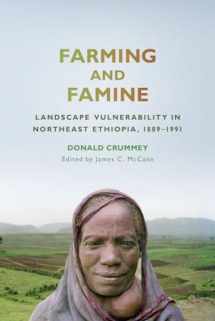
Farming and Famine: Landscape Vulnerability in Northeast Ethiopia, 1889–1991 (Africa and the Diaspora: History, Politics, Culture)
Book details
Summary
Description
In modern times, Ethiopia has suffered three grievous famines, two of which―in 1973–74 and in 1984–85―caught the world's attention. It is often assumed that population increase drove Ethiopia's farmers to overexploit their environment and thus undermine the future of their own livelihoods, part of a larger global process of deforestation. In Farming and Famine, Donald E. Crummey explores and refutes these claims based on his research in Wallo province, an epicenter of both famines.
Crummey draws on photographs comparing identical landscapes in 1937 and 1997 as well as interviews with local farmers, among other sources. He reveals that forestation actually increased due to farmers' tree-planting initiatives. More broadly, he shows that, in the face of growing environmental stress, Ethiopian farmers have innovated and adapted. Yet the threat of famine remains because of constricted access to resources and erratic rainfall. To avoid future famines, Crummey suggests, Ethiopia's farmers must transform agricultural productivity, but they cannot achieve that on their own.


We would LOVE it if you could help us and other readers by reviewing the book
Book review



